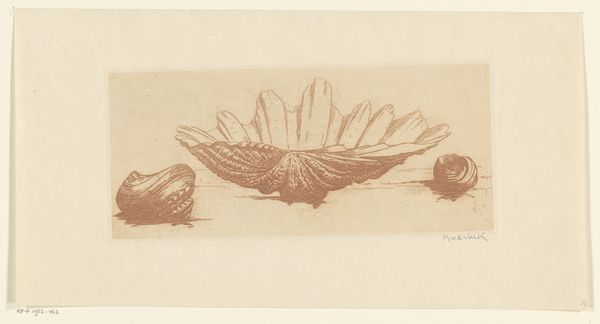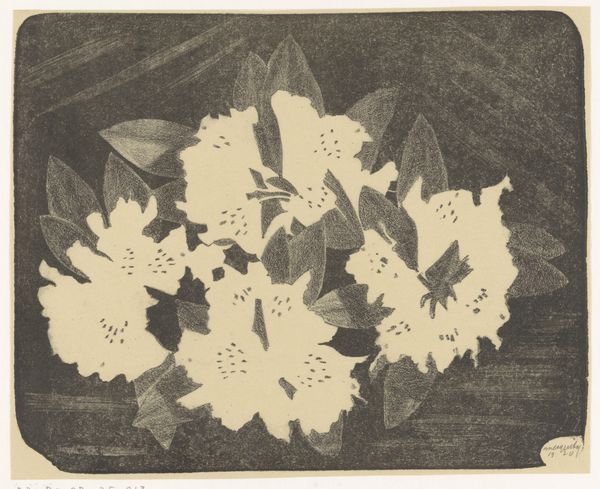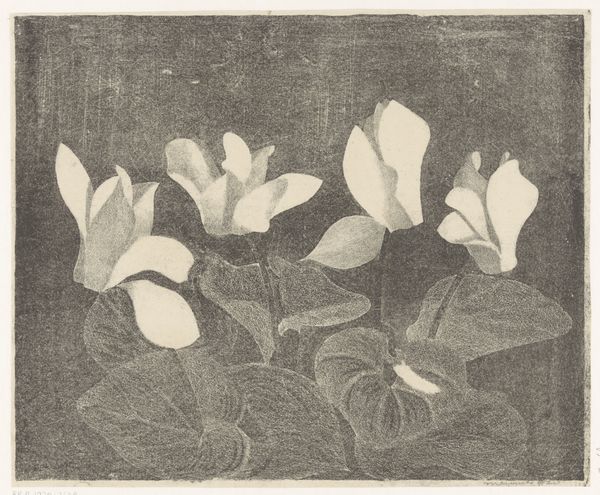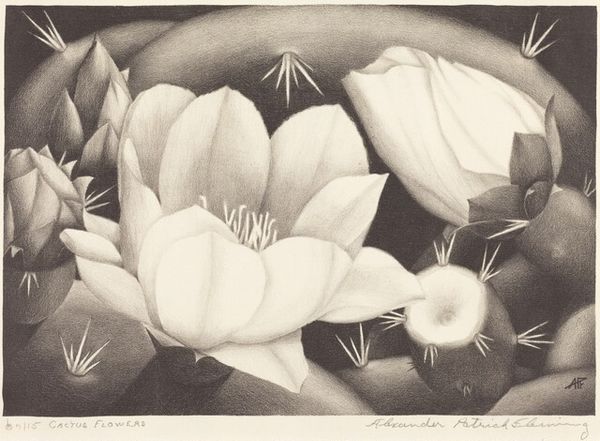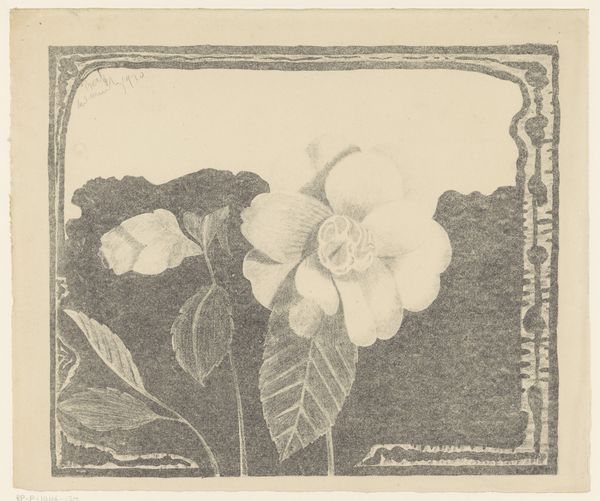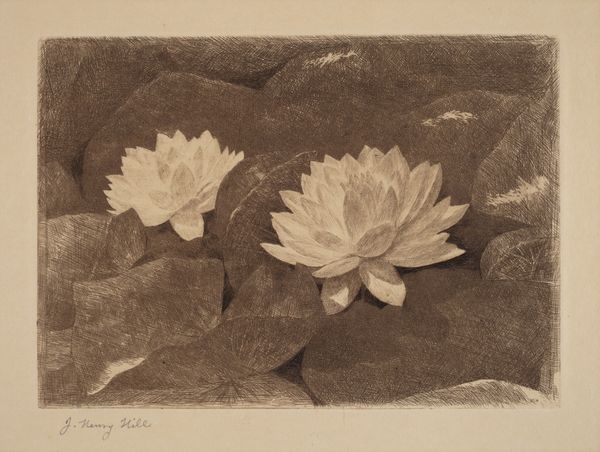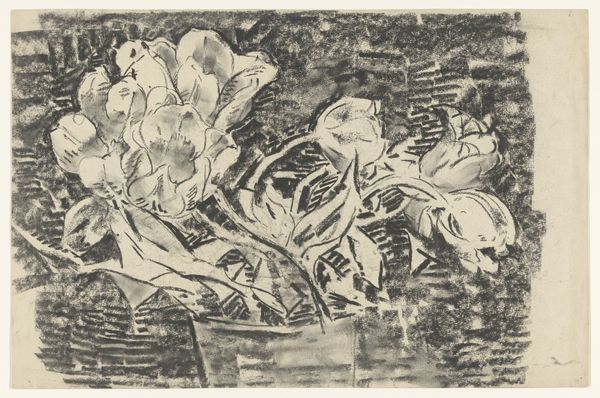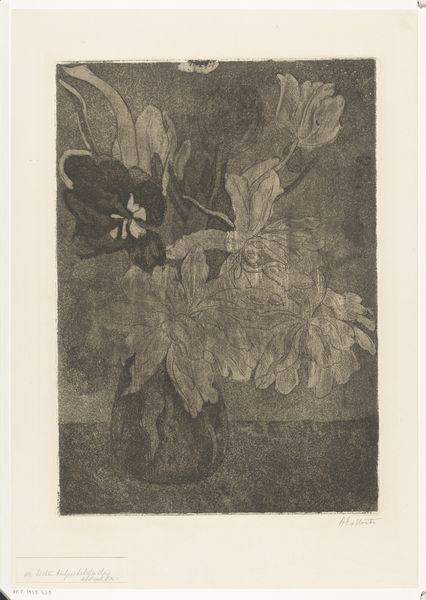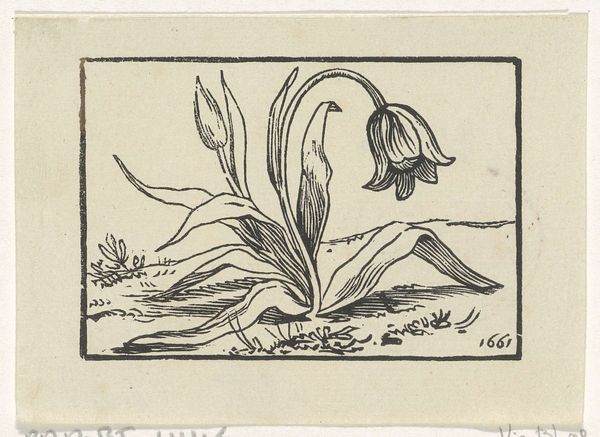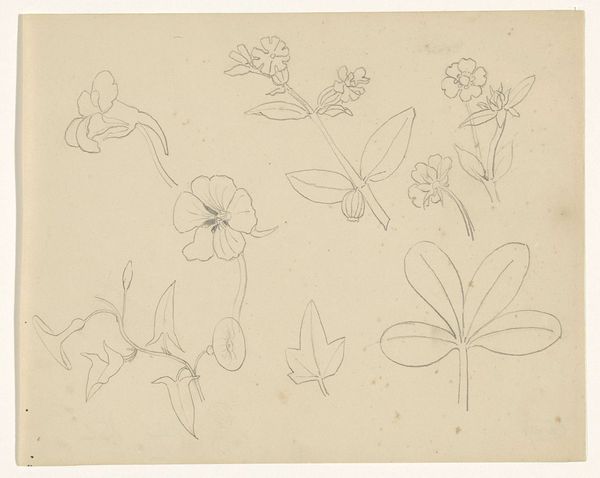
drawing, paper, ink
#
drawing
#
art-nouveau
#
pen drawing
#
pen illustration
#
pen sketch
#
paper
#
ink
#
line
Dimensions: height 133 mm, width 246 mm
Copyright: Rijks Museum: Open Domain
Curator: This pen and ink drawing, titled "Waterlelies," was created by Willem Wenckebach, likely before 1893. It’s part of the Rijksmuseum’s collection and showcases the influence of Art Nouveau on the artist's practice. Editor: Immediately, I notice the striking contrast – the stark white lilies against the rich, dark background. It’s almost a visual paradox: dark yet delicate, still yet seemingly vibrant. Curator: The subject matter, water lilies, was ripe with symbolism during the late 19th century, particularly associating these aquatic blooms with themes of purity, transformation, and the feminine divine. Could we see this artwork as an interpretation of marginalized identities and spaces? Editor: That's an interesting point. Yet, the appeal of this drawing also lies in its formal qualities. Note the elegant, sinuous lines; the careful attention to detail in the petals; and the contrasting textures achieved through the controlled application of ink. The radiating lines of the leaves pull my eyes in different directions, so that no leaf looks alike. Curator: The stylistic elements you've named contributed to a growing awareness of the ways in which artists were breaking from established norms, embracing botanical forms to reflect social and cultural change. Editor: I agree that botanical illustration freed artists of earlier styles. But there is such an inherent tranquility communicated here, the almost meditative qualities of the work, where the meticulous technique itself brings about a reflective stillness. I feel very aware of the pen stroke. Curator: Perhaps it is that the flowers function as symbols of resilience and quiet resistance against a historical context of rapidly changing societal norms? Editor: It’s fascinating to consider how these contrasting interpretations, formal and socio-political, enrich our appreciation of "Waterlelies." Curator: Indeed, Wenckebach gives us a point to contemplate identity, environment, and artistic expression. Editor: And it makes one look at the drawing from an intriguing vantage, a place for the intersection of design and meaning.
Comments
No comments
Be the first to comment and join the conversation on the ultimate creative platform.
